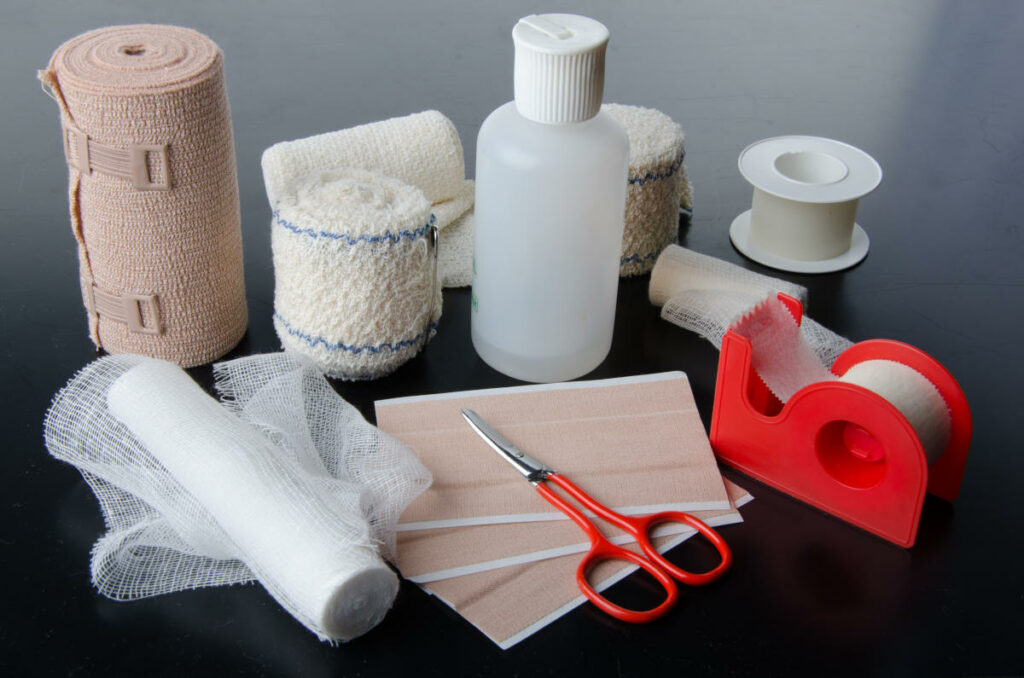Innovation moves quickly, sometimes more quickly than the average person can notice or predict. With hundreds of years of medical and scientific innovation at our backs, it’s easy to forget what was — or wasn’t — there before. Stop the Bleed is one such innovative movement.
It’s also easy to take innovation for granted. In 1952, the worst recorded polio epidemic in U.S. history occurred with 57,628 reported cases. In 1955, Dr. Jonas Salk pioneered the polio vaccine. By 1979, polio had been virtually eradicated from the US.
But before the polio vaccine, we were helpless.

It can be argued that all advancements in public health and safety have some common root in combating helplessness. If we know what to do, we can act. And if we can act, we can save a life.
Despite our many strides, in emergency situations many of us are still helpless.
Education, then, is the strongest weapon we have against helplessness and inaction. In an emergency situation, we often only have each other to rely on. Stop the Bleed was founded to make that possible.
How Stop the Bleed Became the CPR of Bleeding Control
There may be no more dire situation than heavy bleeding. When a person is injured and bleeding severely, you only have a few minutes to get it under control to save their life. And unless the emergency occurred outside of a hospital, it’s up to you to save them.
That’s why Stop the Bleed exists.
The handful of seconds you have to stop the flow of blood is rarely, if ever, enough time for an ambulance to arrive. Instead of waiting and hoping that help is close by, Stop the Bleed trains you to become someone’s chance at tomorrow.
Essentially, Stop the Bleed is the CPR of bleeding control. It is a collaborative call to action led by the American College of Surgeons Committee on Trauma (ACS COT), educating and empowering bystanders and laypersons to provide help in a bleeding emergency.

The ACS Committee on Trauma began training its Stop the Bleed instructors in 2016, with hundreds of current instructors training people of all walks of life to be the help before help arrives.
Though the course material may be different, Stop the Bleed and ProTrainings have the same mission: believing that life matters and we should do everything we can to save another’s life. Both Stop the Bleed and ProTrainings are committed to empowering, educating, and instilling the knowledge and confidence needed to act in an emergency.
The similarities don’t end there. Without the programs or organizations that educate the public, reliance on medical professionals grows past the point of accommodation. We see Stop the Bleed as our partner in saving lives for years to come.
How You Can Stop the Bleed
ProTrainings teaches CPR – a simple but effective lifesaving technique for cardiac arrest and heart attack situations. Stop the Bleed teaches the simple but effective and lifesaving techniques of tourniquet application and wound packing for bleed control.
Each take minutes to learn, but the benefits are literally immeasurable.
Exsanguination, or the loss of enough blood to cause death, doesn’t happen when someone loses all of their blood. Blood loss of 40% is sufficient to cause serious long-term damage or death and it can happen in seconds.
Stop the Bleed’s training curriculum is based on the adaptation of military tourniquet usage into effective, teachable civilian emergency skills. If someone is bleeding out in front of you and you can wrap or pack their wound to the point where the bleeding stops, you may have saved their life.
There’s no magic or mystery at play, just the intelligent application of successful methods. We like to say that anyone can learn CPR and save a life. We believe the same is true for Stop the Bleed. Learn more at StopTheBleed.org or learn the techniques for arterial bleeding control in our video here.
